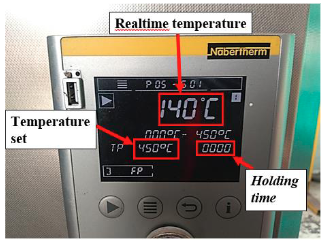EXPERIMENTAL STUDY THE MECHANICAL PROPERTIES OF GMAW WELDING RESULTS ON S355J2+N MATERIAL WITH POST WELD HEAT TREATMENT (PWHT)
DOI:
https://doi.org/10.23917/mesin.v25i1.2848Keywords:
PWHT, GMAW, S355J2+N, sifat mekanik, struktur mikroAbstract
Assembly underframe trains are a connecting process part-part into a system that has a unified function, the process of which uses GMAW-type welding. From the welding results, there is potential for the formation of residual stress which is a problem in this research, so it is minimized using the method Post Weld Heat Treatment (PWHT) thermal. The research aims to determine and analyze the effect of PWHT on the mechanical properties and microstructure of low-carbon steel type S355J2+N resulting from GMAW welding. The research method uses experiments with PWHT temperatures at 450 °C, 750 °C, and non-PWHT to find out the mechanical properties of materials, use the tensile test and micro-Vickers hardness test. Meanwhile, to determine the microstructure formed is used micro examination. The test results, were compared between the welding material with PWHT and the welding material non-PWHT. The results of the research are that the largest tensile strength value of 576 MPa was produced in the material using PWHT at a temperature of 450 °C, the largest elongation of 34.85% was produced in the material with a PWHT temperature of 750 °C, and the highest hardness value was 207.44 HV in the material non-PWHT. The conclusion of the research shows that with increasing PWHT temperature, the hardness and tensile strength values of the material decrease, and there is an increase in the ductility value of the material which is influenced by changes in the dominance of ferrite and pearlite in the material.
Downloads

Downloads
Submitted
Accepted
Published
Versions
- 2024-01-31 (3)
- 2025-01-11 (2)
- 2024-01-30 (1)
Issue
Section
License
Copyright (c) 2024 Muhammad Arif, Indarto Yuwono, Alfi Tranggono Agus Salim, Alit Dharmawan, Dara Lathiful Zuriah

This work is licensed under a Creative Commons Attribution 4.0 International License.











